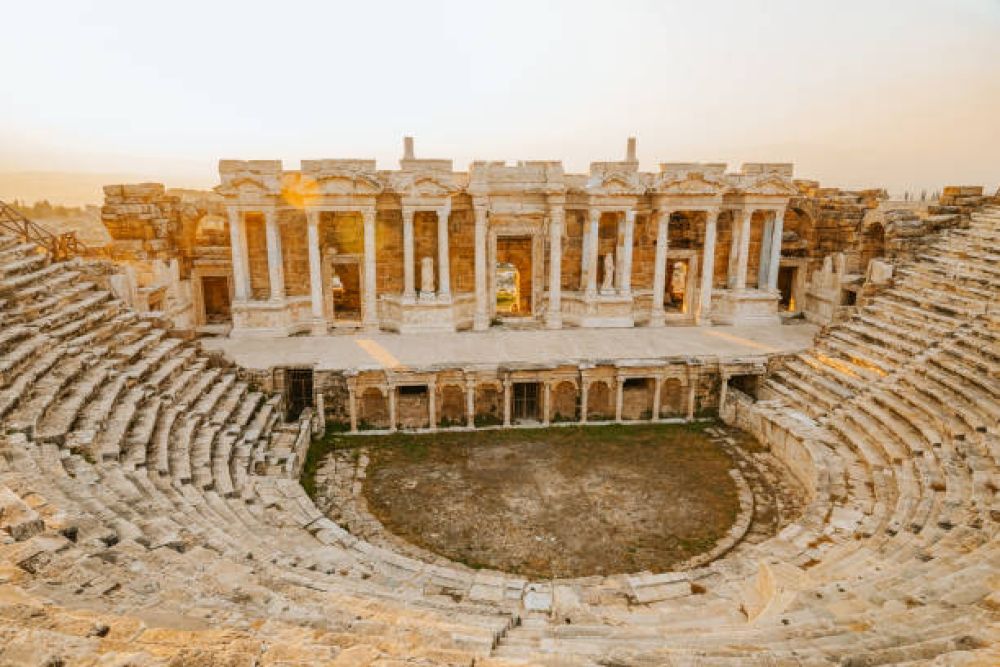

The ancient city of Hierapolis, near the modern town of Pamukkale in Turkey, is a cultural treasure that has attracted visitors since classical times. Founded in the 2nd century BC, Hierapolis was established by the King of Pergamon, Eumenes II, and later came under Roman and then Byzantine rule, before a devastating earthquake in 1334 led to the city’s decline.
The appeal of Hierapolis in ancient times was twofold – its therapeutic hot springs and its sacred Temple of Apollo. Both drew visitors from across the region, with people seeking healing at the city’s baths and consulting the oracle. In its heyday, Hierapolis became a spa city and religious center, and this growing popularity necessitated large social and entertainment facilities, like the grand theatre that still stands today.
The Hierapolis Theatre is one of the city's most significant structures. It was built under the Roman Emperor Hadrian after the 60 AD earthquake and later expanded by Septimius Severus in the 2nd century. With an estimated capacity of 12,000 spectators, this theatre is a masterpiece of classical architecture. Its stage building is adorned with reliefs depicting various gods and emperors, showcasing the artistic prowess of the time.
Hierapolis, along with the nearby white travertine terraces of Pamukkale, was rediscovered by tourists and archaeologists in the late 19th and early 20th centuries. They became a UNESCO World Heritage site in 1988, further cementing their status as a must-visit destination. Today, the site continues to attract thousands of visitors interested in history, culture, and natural beauty.
In recent years, Pamukkale and Hierapolis have benefited from the global trend towards wellness tourism. Tourists come not only to explore the ruins but also to bathe in the therapeutic waters, as the ancients once did. Additionally, there's been a rise in the trend of “sustainable tourism”, with efforts being made to preserve the unique ecological and historical aspects of the area for future generations.
Tourists visiting Hierapolis Theatre today can explore the ruins and imagine the grand performances that once took place. Besides the theatre, the site opens into a panorama of history, including the Necropolis, the baths, and the impressive Antique Pool, where you can swim over ancient Roman ruins.
Pamukkale is easily accessible from major Turkish cities like Istanbul and Izmir. Visitors can fly to Denizli Çardak Airport and take a short bus ride to Pamukkale. The journey is well worth it to experience the enchanting blend of history and natural beauty that Hierapolis Theatre offers.
Hierapolis Theatre and Pamukkale continue to cast their magical spell on modern travelers, just as they did thousands of years ago. With its rich history, stunning architecture, and rejuvenating waters, the ancient city remains a timeless jewel in the crown of Turkey’s tourist attractions.